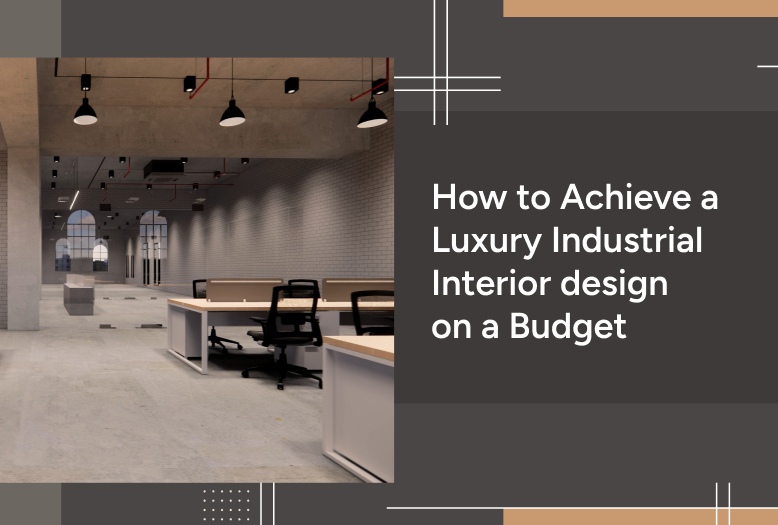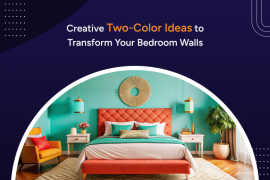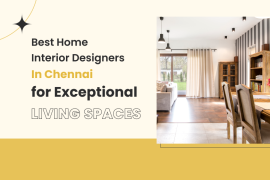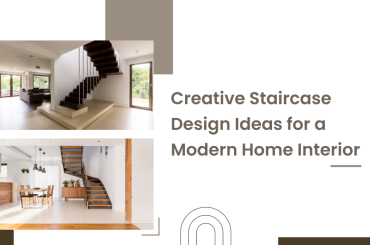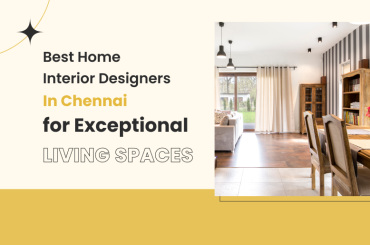Industrial interior design is a celebration of architecture and construction, offering a unique combination of raw materials, open spaces, and minimalist beauty. It originated from the adaptive reuse of industrial spaces like factories and warehouses, transforming them into stylish, functional living areas. Today, industrial design has evolved into a luxurious aesthetic that merges rugged charm with modern elegance. The good news? You don’t need a massive budget to achieve this sophisticated style. Moreover, with a touch of creativity and resourceful planning, you can effortlessly create a stunning industrial interior without overspending. This guide will walk you through how to master the art of industrial design by seamlessly blending architecture, construction, and interior design techniques. Additionally by doing so, you can achieve the perfect balance of luxury and affordability, transforming your space into something both stylish and cost-effective.
Understanding the Industrial Aesthetic: A Fusion of Raw and Refined
At its core, industrial interior design is all about embracing raw, unfinished materials and open layouts. Exposed brick, steel beams, concrete floors, and reclaimed wood form the backbone of this style, highlighting the beauty of imperfections in construction and architecture. However, luxury industrial design elevates this aesthetic by incorporating refined touches. For instance, envision raw concrete walls softened by plush velvet cushions, steel beams complemented by polished brass accents, or rugged wood paired with sophisticated lighting. It’s the striking contrast between rugged elements and refined details that truly defines the essence of luxury industrial interiors. Now, let’s explore how you can successfully achieve this balance without exceeding your budget.
Exposed Brick: A Timeless Feature Made Affordable
Exposed brick walls are synonymous with luxury interior designers in chennai, evoking an urban, rustic charm. However, achieving this look with real bricks can be costly, especially if your walls need structural alterations.
Instead, consider budget-friendly alternatives
Faux Brick Wallpaper
Modern wallpapers mimic the texture and appearance of real brick, offering an affordable and easy-to-install option.
Brick Veneer Panels
These thin panels replicate the look of brick and are ideal for creating an accent wall without heavy construction.
Textured Paint
Using stencils or textured paint techniques, you can achieve a brick-like effect that adds depth and character to your walls. Additionally by focusing on a single feature wall, you can bring the industrial vibe to life without overwhelming your budget.
Reclaimed Wood: History and Character in Every Piece
Industrial interiors thrive on the use of natural, raw materials, and reclaimed wood is a perfect choice. Therefore not only is it environmentally friendly, but it also adds warmth and a sense of history to your space.
Reclaimed wood can be used in various ways
Furniture: Turn old wood planks into coffee tables, dining tables, or shelving units.
Wall Accents: Use reclaimed wood as paneling for an accent wall, adding texture and character.
DIY Projects: A great way to achieve a luxury industrial look on a budget is through DIY projects. For instance, you can repurpose wood from pallets or discarded furniture, which can then be transformed into unique pieces such as benches or headboards. Moreover, by doing this, you not only save money but also add personalized, character-filled elements to your space, seamlessly fitting into the industrial aesthetic. In addition, the imperfections in reclaimed wood naturally contribute to the industrial vibe, ensuring that each piece is truly one-of-a-kind.
Concrete Elements: Edgy Yet Elegant
Concrete is a hallmark of industrial design, offering a raw and edgy aesthetic. However, while polished concrete floors or countertops can be expensive, there are cost-effective alternatives that can help you achieve the same striking look. By using options such as concrete-look vinyl or affordable faux finishes, you can capture the essence of concrete without exceeding your budget.
Concrete-Look Vinyl Flooring: This budget-friendly material mimics the texture and appearance of real concrete while being easy to install.
Faux Concrete Wall Panels: These panels create the illusion of concrete walls, perfect for feature areas.
DIY Concrete Stains: Apply stains to existing surfaces to give them a polished concrete finish.
These options allow you to incorporate concrete’s rugged charm into your design without heavy expenses.
Steel and Metal Accents: Affordable Alternatives to Structural Beams
Steel and metal are essential to industrial interiors, adding an urban edge. While structural steel beams are iconic, they aren’t always necessary to achieve the look. Instead, you can incorporate steel through furniture and accessories, such as metal-framed tables, steel shelving units, or even industrial-style lighting fixtures. Additionally these elements allow you to embrace the industrial aesthetic without the high cost of structural changes.
Metal-Framed Furniture: Look for steel-framed tables, chairs, or shelving units to bring industrial style into your space.
Polished Finishes: Opt for brass or blackened steel accents to add a luxurious touch.
Decorative Elements: Include small metal pieces like planters, trays, or mirrors to reinforce the industrial vibe.
Lighting: The Jewel of Industrial Design Lighting plays a pivotal role in defining the industrial aesthetic. Iconic features like exposed bulbs, pendant lights, and metal chandeliers are staples of the style.
To achieve luxury on a budget, consider
Affordable Industrial Fixtures: Many retailers offer pendant lights and chandeliers that emulate high-end designs at a fraction of the cost.
Edison Bulbs: These vintage-style bulbs are inexpensive yet instantly elevate the ambiance with their warm glow.
Upcycled Lighting: Repurpose old fixtures with a fresh coat of paint or new bulbs to create unique, industrial-inspired lighting. Lighting not only enhances the visual appeal but also helps create a cozy and inviting atmosphere in industrial interiors. For example, using exposed bulbs, vintage-style pendant lights, or industrial sconces adds warmth and character. In addition, the right lighting balances the raw, urban feel of industrial design, making the space both stylish and comfortable.
A Neutral Color Palette: Simplicity Meets Sophistication
Industrial design leans heavily on neutral colors, creating a backdrop that highlights architectural elements and materials. Additionally Shades of gray, black, white, and beige dominate the palette, providing a sense of cohesion and calm.
To add depth and contrast
- Combine neutral walls with warm wood tones or metallic finishes.
- Use luxurious textiles like linen throws or velvet cushions in muted shades to soften the look.
- Opt for dark charcoal or gray paint on an accent wall to create visual interest.
- A neutral palette allows the materials and design elements to take center stage while maintaining a refined and understated elegance.
Repurposed and Upcycled Furniture: Sustainability with Style
Upcycling is not just a cost-saving measure; it’s an opportunity to infuse your home with personality. Vintage furniture is a natural fit for industrial interiors, offering a sense of authenticity.
Ideas for repurposed furniture include
Old Ladders as Shelves: Sand and paint a wooden ladder to transform it into a unique bookshelf.
Reworked Cabinets: Turn old dressers into stylish consoles with a fresh coat of paint or new hardware.
Metal Furniture: Look for second-hand metal chairs or tables that can be refurbished to match your aesthetic. By repurposing, you not only reduce waste but also create a home filled with character and charm.
Statement Art and Accessories: Bold Finishing Touches
Industrial interiors thrive on bold, eye-catching décor that complements their raw materials. Moreover oversized artwork, vintage posters, and black-and-white photography are perfect additions.
Accessories to consider include
Metallic Accents: Brass trays, candle holders, and metal-framed mirrors enhance the luxury factor.
Industrial-Inspired Decor: Items like gears, pipes, or industrial sculptures add authenticity.
Large-Scale Art: Invest in one or two statement pieces that draw attention and tie the room together. These elements provide a layer of personality and sophistication, completing the look.
The Power of Greenery: Bringing Life to the Space
Industrial interiors, with their hard edges and raw materials, benefit greatly from the organic warmth of plants. Additionally, large indoor plants like fiddle-leaf figs or rubber plants make excellent focal points, while smaller varieties like succulents or pothos can add interest to shelves and tables. Furthermore, using industrial-style planters, such as metal pots or concrete containers. Additionally it helps integrate the greenery seamlessly into your design, enhancing both the aesthetic and the atmosphere.
Embracing Minimalism: The Art of Open Space
One of the defining characteristics of industrial interiors is their openness. Moreover avoid overcrowding your space with too much furniture or décor. Instead, focus on multifunctional pieces and thoughtful layouts.
To maintain the minimalist ethos
- Use floating shelves or slim-profile cabinets for storage.
- Leave negative space to allow architectural elements to shine.
- Prioritize quality over quantity when selecting décor items.
- Additionally the result is a clean, airy environment that feels both luxurious and inviting.
Creating Luxury on a Budget
Industrial interior design is as much about creativity as it is about materials. By focusing on key elements like exposed brick, reclaimed wood, concrete, and metal and using affordable alternatives you can achieve the luxurious industrial look with best interior designers in chennai for what you desire. Moreover incorporating upcycled furniture, statement lighting, and greenery adds layers of personality, turning your home into a stylish sanctuary. Luxury doesn’t have to come with a hefty price tag. Additionally with smart planning and an eye for design, you can craft an industrial interior that reflects your personal style and feels effortlessly chic.
Conclusion
Achieving a luxury industrial interior design on a budget is entirely possible with a little creativity and smart choices. By focusing on key industrial elements like exposed brick, raw wood, concrete, and metal and combining them with affordable alternatives, you can create a stylish and sophisticated space without the need for expensive renovations. From repurposing vintage furniture to selecting budget-friendly lighting and accessories, there are countless ways to add industrial elegance to your home without overspending. With a neutral color palette, statement art, and greenery, you can complete the look and make your industrial interior feel luxurious, inviting, and uniquely your own. In the end, luxury isn’t about how much you spend, it’s about creating a space that reflects your personal style and feels effortlessly chic. Additionally With these tips, your dream industrial interior is within reach, no matter your budget.



